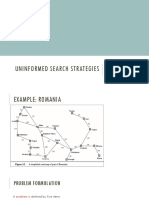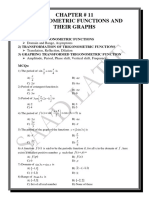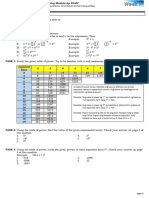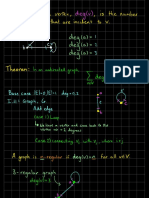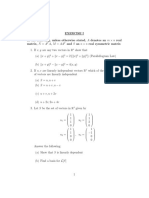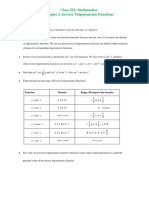0% found this document useful (0 votes)
27 views44 pagesTopic 1 - Search
The document discusses search strategies for route finding, including breadth-first search (BFS), depth-first search (DFS), and informed search methods like A*. It outlines the problem formulation, performance measures, and examples of applications such as the traveling salesman problem and protein folding. Key concepts include the importance of heuristics, optimality, and the trade-offs between time and space complexity in search algorithms.
Uploaded by
periembetib231164meCopyright
© © All Rights Reserved
We take content rights seriously. If you suspect this is your content, claim it here.
Available Formats
Download as PDF, TXT or read online on Scribd
0% found this document useful (0 votes)
27 views44 pagesTopic 1 - Search
The document discusses search strategies for route finding, including breadth-first search (BFS), depth-first search (DFS), and informed search methods like A*. It outlines the problem formulation, performance measures, and examples of applications such as the traveling salesman problem and protein folding. Key concepts include the importance of heuristics, optimality, and the trade-offs between time and space complexity in search algorithms.
Uploaded by
periembetib231164meCopyright
© © All Rights Reserved
We take content rights seriously. If you suspect this is your content, claim it here.
Available Formats
Download as PDF, TXT or read online on Scribd
/ 44












